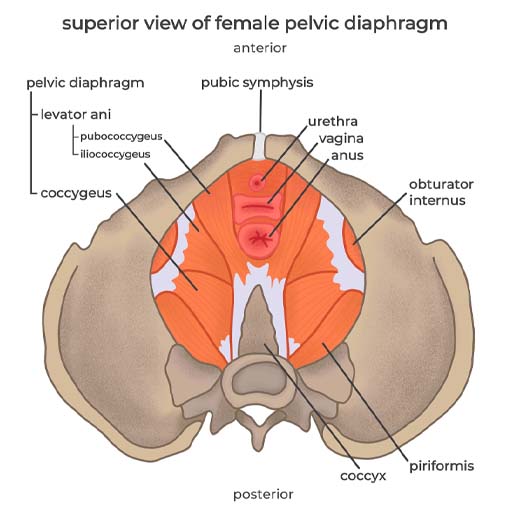3 Which muscles are we talking about?
The pelvic floor is situated inside the pelvis and consists of a group of muscles and ligaments. Because we can’t see them as they are surrounded by larger global muscles around the hips, they seem to get less attention from coaches and trainers. They are also complex in structure as they consist of three layers of muscles that are attached to and integrated with other body systems.
Figure 1 shows the key structures of the pelvis and the pelvic floor.
The main pelvic floor muscles are the levator ani and the coccygeus. The purpose of these muscles is to keep us dry by avoiding urine, wind or faecal leakage, they allow us to fully empty our bladders and bowels, and they facilitate sexual function and pleasure.
The pelvic floor has to contract, relax and respond to changes in pressure. In sport, common movements, such as jumping and quickly changing direction, place additional stress on the pelvic floor muscles. Thus gymnasts, trampolinists, basketball and volleyball players are most at risk of pelvic floor dysfunction.
Sometimes when we are lifting heavy weights, we need to use the Valsalva manoeuvre (i.e. exercise is performed while holding the breath). This is necessary to stabilise the body’s core, but it can damage the pelvic floor muscles. This is due to the increased pressure in the abdomen and thus places additional stress onto the pelvic floor muscles. As a result lifting heavy weights can cause stress incontinence or pelvic organ prolapse. A pelvic organ prolapse [Tip: hold Ctrl and click a link to open it in a new tab. (Hide tip)] is when one or more organs within the pelvis moves from their natural position to form a bulge in the vagina.

